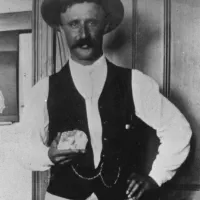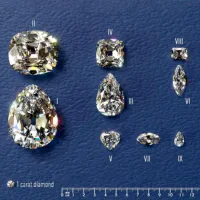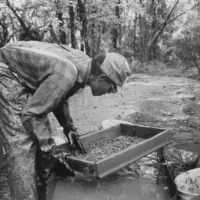Cullinan Diamond
Diamonds have fascinated mankind for centuries with their stunning beauty and incredible value. Among the countless diamonds discovered throughout history, one stands out as the largest ever discovered, a true wonder of nature. This blog looks at the discovery of the world’s largest diamond, the mine where it was found, its impressive weight and color, and the technology used to discover this incredible gem.
The Mine: The Cullinan Mine

The largest diamond in the world was discovered in the Cullinan mine, located in South Africa. Originally known as the Premier Mine, it was renamed in honor of Sir Thomas Cullinan, who owned the land on which the mine was established. The Cullinan Mine has a rich history and is known for producing some of the most important diamonds in the world, including the largest diamond ever discovered, known as the Cullinan Diamond.
The Discovery: How the Cullinan Diamond Was Found

The Cullinan diamond was discovered on January 26, 1905 by Frederick Wells, the manager of the mine. During a routine inspection, Wells noticed a shimmering object sticking out of the mine wall, just a few feet below the surface. Upon closer inspection, he realized that it was no ordinary diamond, but a huge crystal of unimaginable proportions.
The diamond was carefully extracted from the mine and was soon confirmed to be the largest gem quality diamond ever discovered. Weighing 3,106 carats, the Cullinan diamond broke all records and went down in history as one of the most extraordinary diamonds ever discovered.

The Weight and Color of the Cullinan Diamond
The Cullinan diamond, in its rough form, weighed 3,106 carats, or about 1.37 pounds. It was an exceptional type IIa diamond, known for its great clarity and lack of nitrogen impurities, giving it exceptional transparency and brilliance. The diamond showed a beautiful white color with a slight bluish tint, which made it even more attractive.
The Cutting and Polishing Process

Because of its exceptional size and exceptional quality, the Cullinan diamond was split into several smaller stones to maximize its value. The rough diamond was sent to the Asscher brothers of Amsterdam, who were famous diamond cutters at the time. It took several months to study the diamond and plan the cutting process.
The first step was to cut the diamond, a delicate and dangerous procedure that required precision and expertise. The diamond was split into nine large stones and almost a hundred smaller stones. The largest of these stones, known as the Great Star of Africa or Cullinan I, weighs 530.2 carats and is now housed in the Sovereign’s Scepter with the Cross, which is part of the Crown Jewels Britannica..
The Technology Used: Instruments for Detection and Extraction

The discovery and extraction of the Cullinan diamond depended heavily on the skills of the miners and the tools available at the time. In the early 1900s, mining technology was much less advanced than it is today, so the discovery of such a massive diamond was largely due to the handiwork and careful eye of experienced miners such as Frederick Wells.
Once the diamond was discovered, it was carefully mined using basic mining tools like picks and shovels. The process requires careful handling to avoid damaging the gem. Today, diamond mining involves much more sophisticated technologies, including X-ray fluorescence (XRF) technology, which can detect diamonds deep in the earth’s crust.
The Value of the Cullinan Diamond

The Cullinan Diamond is not only the largest diamond ever discovered, but also one of the most valuable. Its value is not only in its size, but also in the historical significance and the exceptional quality of the stones it produced. The Cullinan I and Cullinan II diamonds, both cut from the original stone, are among the most famous and valuable diamonds in the world, with a combined value difficult to estimate.
The Legacy of the Cullinan Diamond
The discovery of the Cullinan diamond marked a turning point in the history of diamond mining and added a new chapter to the story of the world’s most coveted gem. His legacy continues to shine brightly, not only in the British Crown Jewels, but also in the hearts and minds of gem lovers and historians around the world.
The Cullinan mine remains an important source of diamonds today, continuing to produce high-quality gems sought after by collectors and jewelers. The rich history of the mine and its connection to the world’s largest diamond make it a site of great historical and cultural significance.
Conclusion
The Cullinan Diamond is a testament to the beauty and wonder of nature’s creations. Its discovery more than a century ago was an important event in the world of geology, and its legacy lives on as a symbol of the extraordinary value and appeal of diamonds. The story of this extraordinary gem, from its humble origins in the Cullinan Mine to its place among Britain’s crown jewels, is a fascinating journey through history, craftsmanship and the enduring human fascination with these wonders.
Stones

